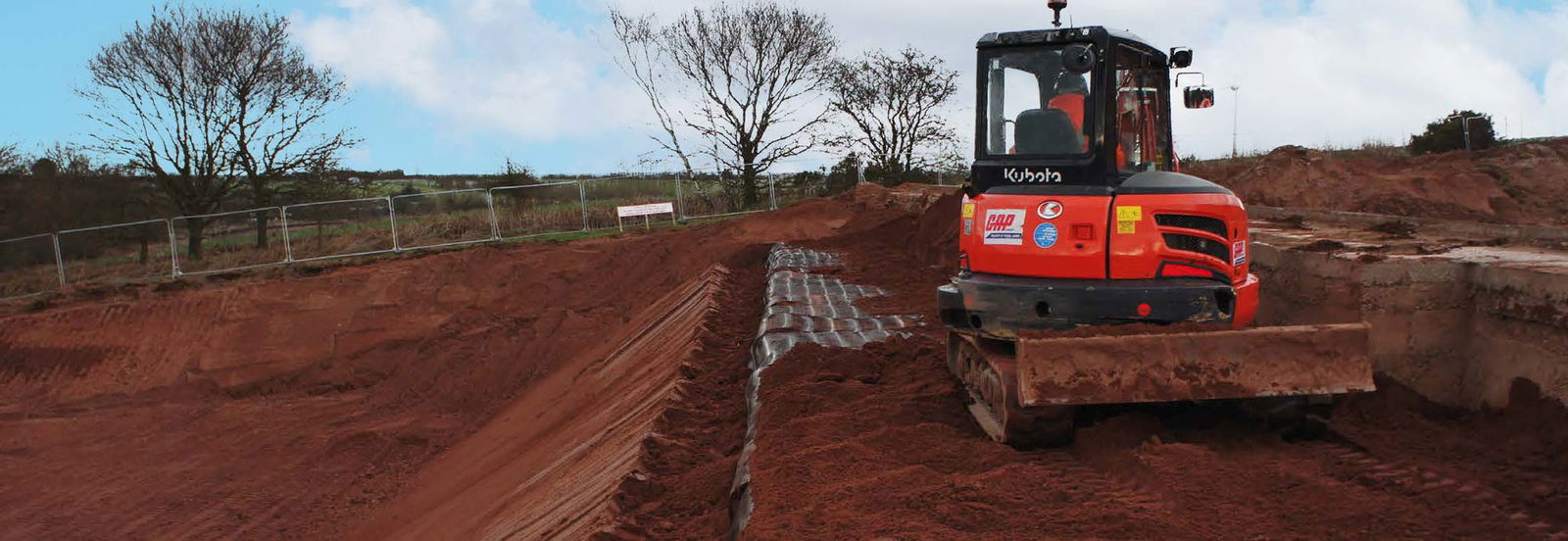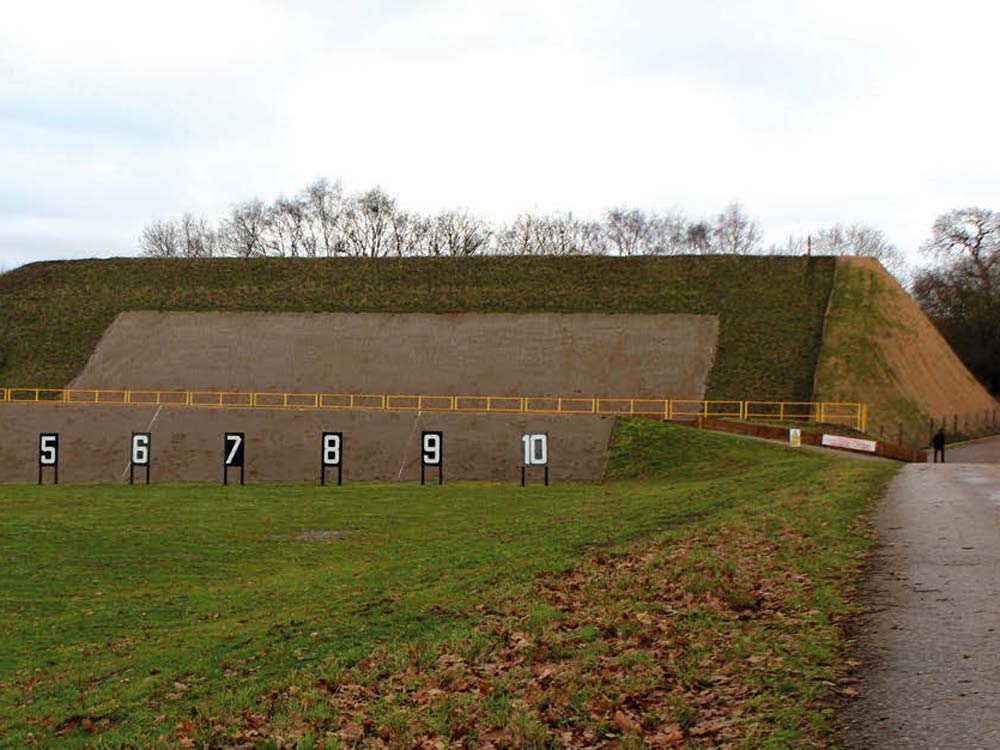
Whittington Rifle Ranges
The existing stop butts at Whittington Ranges had not been used for many years and had fallen into a state of disrepair. Our client was tasked with reinstating the stop butts and bringing them up to current safety standards so that the range could be re-opened for use by the armed forces. Two stop butts underwent reconstruction to increase their heights by approximately 4.0m to 12.5m, and also increase the angle of the front face from 15 degrees to 34 degrees. The most cost-effective and chosen method to achieve this was to form a geogrid soil-reinforced slope. Our E’GRID 50R was used for the slope reinforcement with 6.4m long tails installed horizontally at 1.0m vertical centres as the primary reinforcement. 2.0m long tails were used as the secondary reinforced midway between each of the primary layers. The geogrid layers were carefully set out to achieve the required face angle, with site-won fill placed and compacted between each of the layers to form a stable reinforced soil construction. 

Progress on the slope construction was hampered by adverse winter weather conditions. To minimise delays a variety of compaction plant were trialled to establish the most effective. Once the slope had been constructed to the required height it was graded to the desired angle. The lower 50% of the slope then had a ‘bullet catcher’ constructed and filled with sand, ensuring that a depth of 1m along the ‘line of sight’ of any bullets was achieved. ProtectaWeb's cellular confinement system was installed on the upper 50% of the slope and filled with seeded topsoil to provide a vegetated finish to the upper slope. One key criteria was that the use of the normal metal fixing pins was strictly prohibited due to the risk of ricochet from bullets. Approval to use wooden stakes instead was obtained. Our E’GRID Uniaxial geogrids are manufactured from high-density polyethylene (HDPE), which is punched and drawn to create long apertures in the principle load-carrying direction. Used in the reinforcement of walls and slopes, its principle characteristic is good creep performance with low strain and high strength under constant load. |




